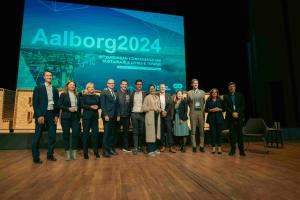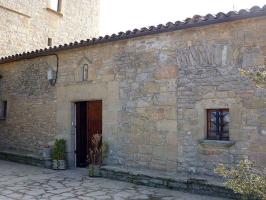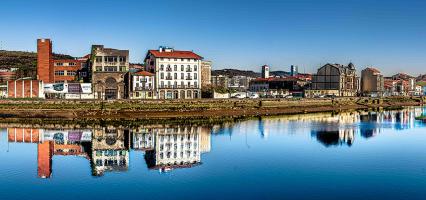Thessaloniki gets ready for its metro launch in November
The underground rapid transit lines have been under construction for almost two decades due to various project delays
 TheMayor.EU logo
TheMayor.EU logo The ceremony took place on Sunday and happens after years of legal dispute
On Sunday 19 September King Willem-Alexander unveiled the first National Holocaust Memorial in The Netherlands. The monument that was created by the Dutch Auschwitz Committee and designed by architect Daniel Liebeskind.
It is the first memorial to name all 102,000 Dutch Jews, Sinti and Roma who were murdered by the Nazis during World War II.
Dutch Prime Minister Mark Rutte said it is a memorial against oblivion. "This monument says: No, we will not forget you. No, we will not allow your names to be erased. No, evil does not have the last word."
The prime minister also stressed that the memorial forced the Netherlands to account for the "cold reception" given to the few Jews who had survived the death camps and returned. Rutte spoke of "a black chapter in our history."
Amsterdam Mayor Femke Halsema recalled that during the German occupation, the city did not sufficiently protect the Jewish population from persecution.
At the beginning of the occupation in May 1940, she said, there were about 140,000 Jews living in the Netherlands, 80,000 of them in Amsterdam. Only 15 000 survived, she said.
"The names now carved in stone, these walls, stand like a fortress between us and oblivion," Halsema said.
The city issued an emergency decree on Friday, ahead of the official opening out of concern about potential protests.
"I'm glad it's finally here," Auschwitz Committee chairman Jacques Grishaver told dpa. "This monument gives the victims back their names 76 years after the end of the war and proves that they lived."
The monument, funded mainly through donations, is located near the near the Jewish Quarter in Amsterdam's city centre.
It consists of brick walls, which visitors can walk around, representing four Hebrew letters meaning "in memory of." At the top of the walls are steel surfaces that reflect stones, trees and the sky.
Each brick bears the name of a victim, the date they were born and the age at which they died.
Some 70 to 80 per cent of the families listed by name were killed by the Nazis.
The monument is important for the Jewish community, Grishaver said, as a place of remembrance and also education.
However, local residents took to the courts to try and prevent the construction, fearful of an onslaught of visitors and complaining of its size.
The Netherlands' highest court permitted the building to go ahead in late 2019, though Grishaver noted that this came too late for many survivors.
Source: DPA

The underground rapid transit lines have been under construction for almost two decades due to various project delays

Now you can get your wine in Talence by paying directly in Bitcoin

That’s because the state has to spend money on updating the railway infrastructure rather than subsidizing the cost of the popular pass

Rethinking renewable energy sources for the urban landscape

The examples, compiled by Beyond Fossil Fuels, can inform and inspire communities and entrepreneurs that still feel trepidation at the prospect of energy transition

Now you can get your wine in Talence by paying directly in Bitcoin

The 10th European Conference on Sustainable Cities and Towns (ESCT) sets the stage for stronger cooperation between the EU, national and local level to fast track Europe's transition to climate neutrality.

At least, that’s the promise made by the mayor of Paris, Anne Hidalgo

The underground rapid transit lines have been under construction for almost two decades due to various project delays

At least, that’s the promise made by the mayor of Paris, Anne Hidalgo

Hostal de Pinós is located in the geographical centre of the autonomous region

Despite its church-y name, the district has long been known as the hangout spot for the artsy crowds

Urban dwellers across the EU are having a say in making their surroundings friendlier to people and the environment.

Forests in the EU can help green the European construction industry and bolster a continent-wide push for architectural improvements.

Apply by 10 November and do your part for the transformation of European public spaces

An interview with the Mayor of a Polish city that seeks to reinvent itself

An interview with the newly elected ICLEI President and Mayor of Malmö

A conversation with the Mayor of Lisbon about the spirit and dimensions of innovation present in the Portuguese capital














